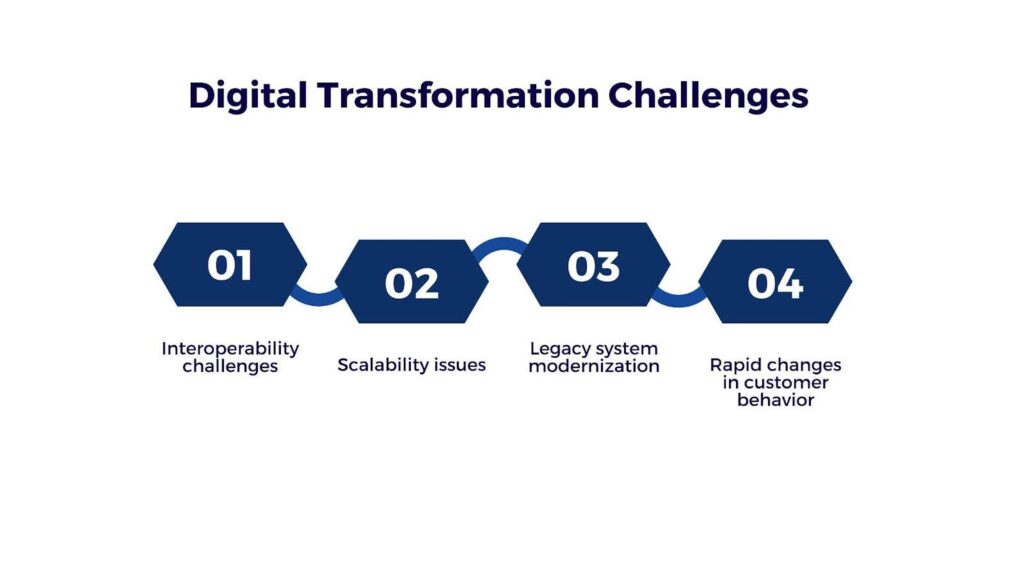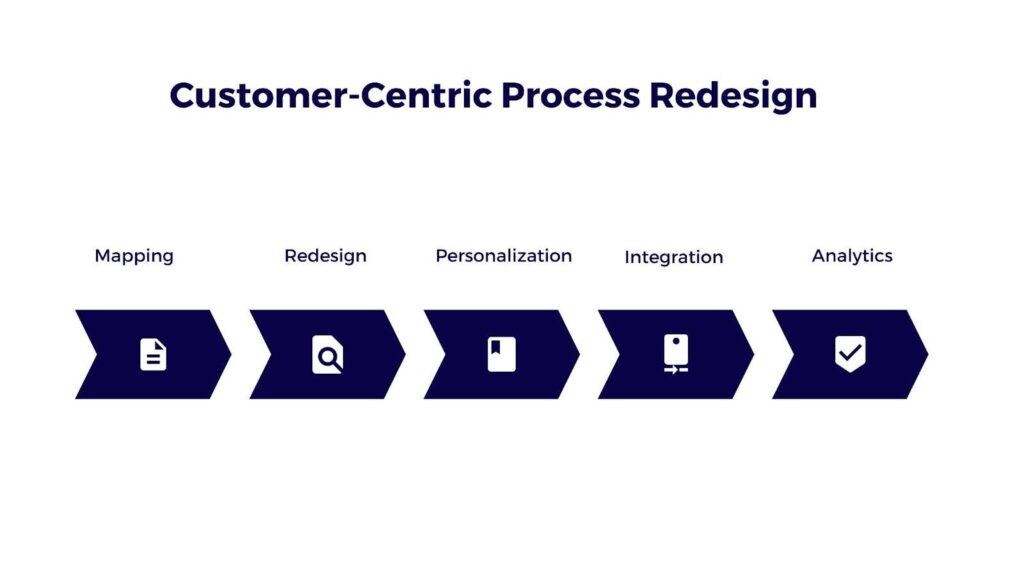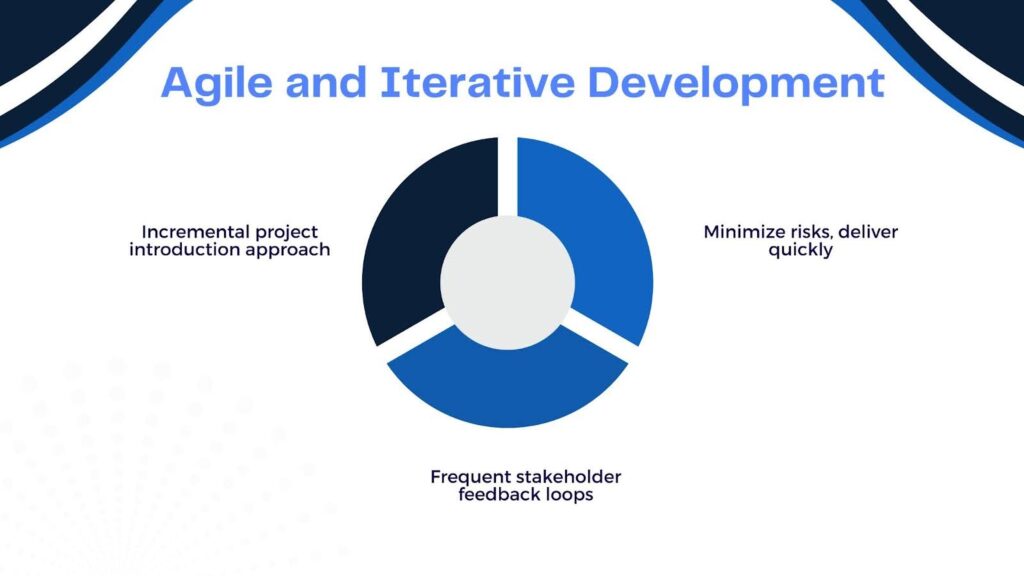
Digital transformation is a journey every organization has to take if it wants to remain relevant in the world of digitization. This journey entails rethinking business models, reshaping company culture and embracing new technologies to meet the demands of modern customers and markets.
Digital transformation is not just about technology; it is about the people, process, and strategic alignment. Seamless and responsive practices aim to make an organization quick in innovation and capable of delivering extraordinary value.
Indeed, there are challenges but the benefits can be revolutionary. In this blog, we will review the challenges and the key steps of digital transformation. We will provide some roadmap on how to go through each stage of this process successfully.
Digital Transformation Challenges
Many companies recognize the need for digital transformation process, but they face challenges. One of the bottlenecks they face is the absence of a clear roadmap for navigating all the stages involved. Here are some common challenges companies face:

- Interoperability challenges: Most ogranizations adopt various digital tools from multiple vendors at the same time. But these tools don’t always work seamlessly together. This creates a challenge for them to keep their operations running smoothly. So it is crucial to ensure these tools run smoothly to avoid any data silos.
- Scalability issues: As companies grow, the systems and technologies introduced during digital transformation process need to be scalable. So, it is important to ensure that these solutions can handle increased demand without losing performance.
- Legacy system modernization: Many companies rely on older systems that don’t easily adapt to new digital tools. Replacing or modernizing these systems is often expensive and time-consuming. This poses a significant hurdle in the digital transformation journey. Know what legacy systems are and when to upgrade them.
- Rapid changes in customer behavior: The digital landscape is constantly shifting, accelerating changes in customer behavior. Companies must leverage AI and Low Code solutions to remain flexible and data-driven, ensuring they stay ahead of customer expectations and evolving market demands.
Phases of Digital Transformation
Understanding the steps for digital transformation can help overcome these challenges. We have outline the stages of digital transformation, each contributing towards the establishment of a digitally mature and successful organization.
- Assess the Current State
The first step in the process of digital transformation is an assessment of the current status of a company. This assessment entails scrutiny of existing processes, technologies, culture, and skillsets. An assessment gives insights into the gaps and areas of improvement, and sets up the benchmark against which progress will be measured.
Key questions to be considered:
- What are the pain points within current operations?
- Which technologies are outdated or serve as a hindrance to efficiency?
A proper analysis of the already existing environment yields very important information and points out what is required to accomplish a digital transformation process.
- Customer-Centric Process Redesign
The second is the redevelopment of major business processes with a customer-focused approach. This involves mapping customer journeys, identifying the points of friction, and redesigning around the customer.
It involves rethinking traditional processes and leveraging technology to enhance personalization, seamlessness, and responsiveness of customer experiences. This might also mean bringing in integration with CRM systems, digital feedback loops, and advanced analytics to keep refining the customer experience in response to real-time data.

- Talent Development and Empowerment
Upscaling and empowering skilled employees is an investment in the process of digital transformation, as it cannot happen without them. Training programs related to digital skills in organizations will make them valuable partners.
It’s about creating a culture that would allow experimentation, innovation, and collaboration. Employees need to feel part of the transformation journey-through frequent workshops, involvement in decision-making, and incentives for providing new ideas.
- Data-Driven Decision Making
Data is core to successful digital transformation. Each organization needs to be capable of robust data analytics, leverage predictive analytics, and drive a data-driven culture. It takes investment not only in analytic tools but also in training staff to understand data and use the same in day-to-day decision-making.
Skillful data governance practices ensure data accuracy, availability, and security. This will enable the organization to unlock new opportunities, be more efficient, predict customer needs, and make wiser business decisions supporting sustainable goals of transformation.
- Adoption of Technology and Modernization
This phase encompasses the upgrade of legacy systems to the latest versions, implementation of cloud solutions, and use of emerging technologies like AI, IoT, and automation to build leaner processes.
Modernization is often the hardest phase because it involves architecturally reworking systems that could be outdated and in place for several years. It tends to force companies to evaluate what technologies meet their objectives, how they will fit into their business processes, and create a roadmap. New technologies should be adopted in a way that ensures scalability, interoperability, and alignment with other transformation objectives of the enterprise
- Agile and Iterative Development
Agile implementation is about cutting big transformation initiatives down to granular, manageable projects. The focus of this phase is to introduce initiatives incrementally, take feedback, and make further adjustments based on outcomes. These can be tested and iterated upon.
It grants the organization an easy way to minimize risks, adapt innovative conditions, and deliver value quickly. Frequent feedback loops with stakeholders are important to ensure that the back-and-forth associated with this transformational effort starts to go in the right direction. Thus, it provides intended outcomes to employees and customers.

- Ecosystem and Business Partnerships
Most organizations have to look beyond internal capabilities to achieve successful digital transformation through building an ecosystem of partners-technology vendors, startups, consultants, or even competitors who can partner with each other. A strong ecosystem can introduce new skills and accelerate innovation.
A strategic partnership that spots the partners complementing one’s organization in its key areas of strength and capabilities can help an organization gain access to capability gaps. Partnerships will enable organizations to gain access to new technologies, explicit knowledge, and accelerate the implementation of digital initiatives. A well-set-up ecosystem also allows open innovation that will lineage into new opportunities or better solutions for the customers.
- Continuously Innovate and Improve
Digital transformation is a journey not a destination. During this phase, an organization should set up structures for continuing to innovate. This is not just about keeping up with evolving technologies but also going that extra mile to experiment with newer ways or solutions. The establishment of focused teams or innovation labs could position the organization to keep its eye on future opportunities while being agile and responsive toward the market.
Conclusion
Digital transformation, when followed carefully through each stage, allows organizations to overcome challenges and effectively reach their strategic goals. The rewards are many: greater customer satisfaction, better operational efficiency, cost savings, and faster innovation.
For any organization, these benefits come with a well-planned strategy, a cultural shift towards embracing technology, and a commitment to continuous improvement. Each phase builds upon the previous one, ensuring that digital capabilities become part of the organization’s DNA, not just a set of tools.
We can help You with Your Digital Transformation Process
Navigating the steps of digital transformation is always challenging, but you don’t have to go it alone. With guidance from Genexus Consulting, the journey for digital transformation becomes smoother and less daunting. From assessment through implementation and beyond, our expertise can make sure every phase aligns with your business goals. Let us help you make the right decisions for a bright digital future.




